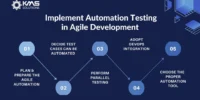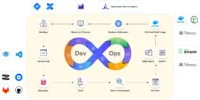Microservices architecture has revolutionized the way we design and deploy software, providing a scalable and flexible approach to building applications. In this guide, we’ll explore quick tips to master microservices and create robust, scalable architectures that meet the demands of modern software development.
1. Decompose Your Application Thoughtfully
Start by breaking down your monolithic application into well-defined, independent services. Thoughtful decomposition is crucial for defining clear boundaries between services and ensuring that each microservice addresses a specific business capability.
2. Embrace Containerization with Docker
Containerization, particularly with Docker, simplifies the deployment and scaling of microservices. Packaging each microservice and its dependencies into a lightweight container ensures consistency across various environments, from development to production.
3. Orchestrate with Kubernetes
Kubernetes excels in managing containerized applications, providing automated deployment, scaling, and orchestration. Leverage Kubernetes to efficiently manage the lifecycle of your microservices, ensuring high availability and resilience. ⚙️
4. Implement Service Discovery
Service discovery mechanisms allow microservices to locate and communicate with each other dynamically. Use tools like Consul or etcd to automate service discovery, enabling seamless communication between microservices as they scale up or down.
5. Prioritize Data Management and Independence
Each microservice should own its data, fostering independence and minimizing dependencies between services. Choose appropriate databases for each microservice, considering factors like data structure, volume, and access patterns. ️
6. Establish Comprehensive Monitoring
Monitoring is critical in a microservices environment. Implement comprehensive monitoring and logging to gain insights into the health, performance, and behavior of your microservices. Tools like Prometheus and Grafana can be valuable additions to your monitoring stack.
7. Apply Circuit Breaker Patterns
Implementing circuit breakers prevents cascading failures in a microservices architecture. Tools like Netflix Hystrix help you control the flow of traffic between services, ensuring that failures in one microservice do not lead to the collapse of the entire system. ⚡
8. Secure Microservices Communication
Ensure that communication between microservices is secure. Implement authentication and authorization mechanisms, use HTTPS for communication, and consider tools like JWT (JSON Web Tokens) for secure identity propagation across services.
9. Automate Testing in Isolation
Microservices lend themselves well to automated testing. Test each microservice in isolation to ensure that it functions correctly and meets its defined requirements. Automated testing contributes to the overall reliability of the entire system.
10. Encourage a DevOps Culture
Microservices and DevOps go hand in hand. Encourage a culture of collaboration and shared responsibility between development and operations teams. Embrace continuous integration, continuous deployment (CI/CD), and automate the deployment pipeline for rapid and reliable releases.
Conclusion
Mastering microservices involves thoughtful decomposition, containerization with Docker, orchestration with Kubernetes, service discovery, independent data management, comprehensive monitoring, circuit breaker patterns, secure communication, automated testing, and a DevOps culture. By incorporating these quick tips into your microservices architecture, you’ll build scalable, resilient, and efficient systems that can adapt to the dynamic demands of modern software development. Happy microservices mastery!








